Jesus

I know, probably not what you expected! Certainly not the face that's hanging up in churches or your grandma's house. But according to AI, Jesus probably looked more like this than your hippie neighbor.
I mean, it makes sense. For one, just think about where he was born. Do you really think he came out with pale, white skin? Also, this AI program was fed descriptions of Jesus taken from the Bible, so, who are we to argue with a non-biased technology? I give you, Jesus.
Napoleon

There's probably no surprise here—Napoleon looks very similar to how he's always been depicted. The dark hair, the facial features...this significant figure in history is definitely accurate physical features wise.
Of course, he's quite a bit more recent compared to Jesus. We have more paintings and portrayals of him to help AI along. The great thing about this newly generated image is the fact that it's so clear and realistic!
Muhammad

Muhammad was an Arab religious, social, and political leader. He founded the Islam religion. Born around 570 CE in Mecca, there are, of course, no photographs of him, only paintings and portraits.
Thanks to AI, we get a more realistic view of him. His portrayal here looks to be aligned with the majority of his images—dark skin and facial hair, with a serious look on his face.
William Shakespeare
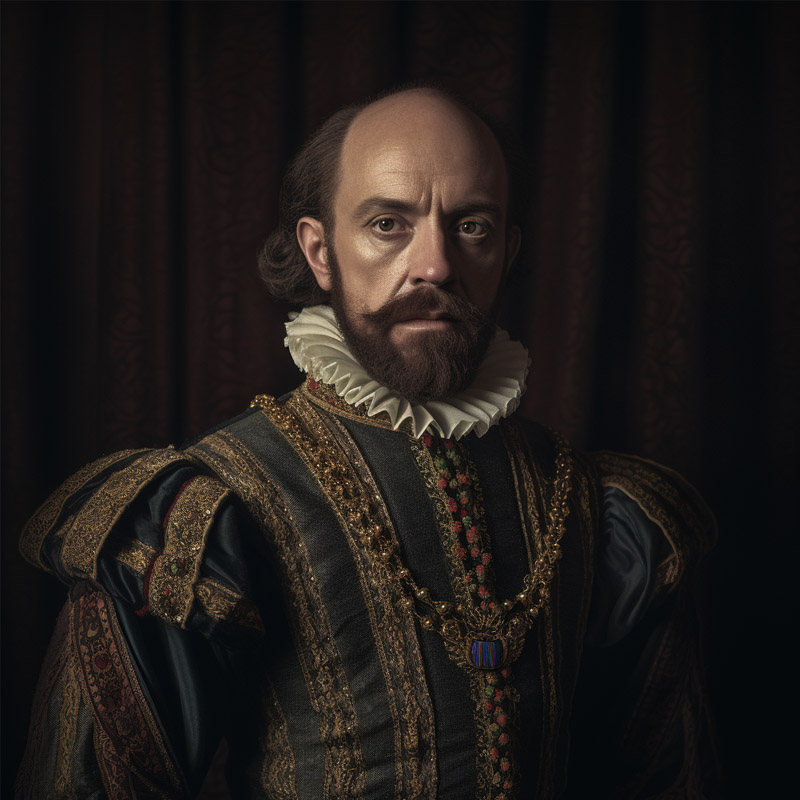
William Shakespeare, known for his iconic contributions to literature, has multiple paintings in his likeness. Based on these, we have a pretty decent idea of what the guy looked like. But let's put a more realistic spin on it.
AI technology brings us a clearer image of Shakespeare, looking like he just posed for a picture. He still looks extremely similar to other renditions, so no great surprise here. He may look a bit slimmer here than how he is usually portrayed.
Gautama Buddha

We typically associate 'Buddha' with serene, cross-legged statues, but these statues were inspired by a real person called Siddhartha Guatama -- the Buddha himself. Since he was born around 560 BCE we don't have any pictures, but based on portraits, this must be pretty close to how he looked!
In this AI rendition, we see his eyes open, somewhat of a smile on his face, and a much more detailed account of his features. It's very interesting to see the program still found a way to incorporate the gold that is so often associated with Buddha, even if it's just as an aura around his face!
Aristotle

Aristotle has always been one that is hard to imagine as someone more than a pupil-less, white figure. Why? Because he is most often represented by his marble sculptures. While, of course, there are also paintings of him, his most prominent portrayal is very... statuesque.
With AI, we're shown a much softer, worn face. He looks a lot more like someone's grandpa than a figure of old. We're able to see so much more character on his face and feel more of a sense of humanity about him. "Knowing yourself is the beginning of all wisdom." I think we know him a tiny bit better now.
Alexander the Great

Honestly, in most of the paintings and portraits, Alexander the Great is this young, heroic, handsome fellow. To be given such a title and have such significant achievements, he had to have been quite the man. We were not disappointed.
AI has delivered us an intimate look at the historic figure, and we can't take our eyes off of him. Born in 356 BC, king of Macedonia—he was obviously the world's hottest man at one point. Too bad People magazine wasn't around at the time.
Julius Caesar

Another man remembered in marble, Julius Caesar has had multiple portrayals of him through multiple types of media. Let's see what the ruler of the Roman empire looks like according to AI.
He looks older, and definitely a little more stressed out than in other portrayals. Is it because AI knows his whole story and what would eventually go down? I feel like that was definitely a component when creating this image. "Veni, vidi, vici."
Christopher Columbus

Ah, Christopher Columbus, the Italian explorer who believed he had discovered "The New World". While he has a holiday to commemorate his great achievements, in recent decades, there have been protests against celebrating because they led to the transatlantic slave trade and the deaths of millions from murder and disease.
We've all seen his portraits and have a good idea of what Columbus probably looked like. According to AI, it seems like his features are much sharper. He has a more defined jawline and nose. I wonder what he's looking at?
King Arthur

King Arthur is a man who has a large variety of interpretations of how he appeared. Between the sketches, paintings, and movie adaptations, this man's looks are extremely versatile! It seems there is no one solid idea of what he actually looked like.
That's where our handy-dandy AI technology really comes to the rescue. Here, we see King Arthur in all his medieval glory. It seems his likeness here certainly lends itself to several tapestries showing Arthur in a coat of arms. He has a long slim face with lighter-colored hair.
Wolfgang Amadeus Mozart

In most portraits, Mozart is portrayed with a distinctive nose and a somewhat unhappy expression. Since the majority depict these features, it's safe to assume it's pretty accurate. Maybe being a world-famous musician isn't all it's cracked up to be?
What we didn't expect was this head of hair! Or should we say wig. Though it's well-known Mozart wore a wig, we never imagined it was as—lofty as we see here. He was certainly ahead of his time. He took his hair care to the next level!
Plato
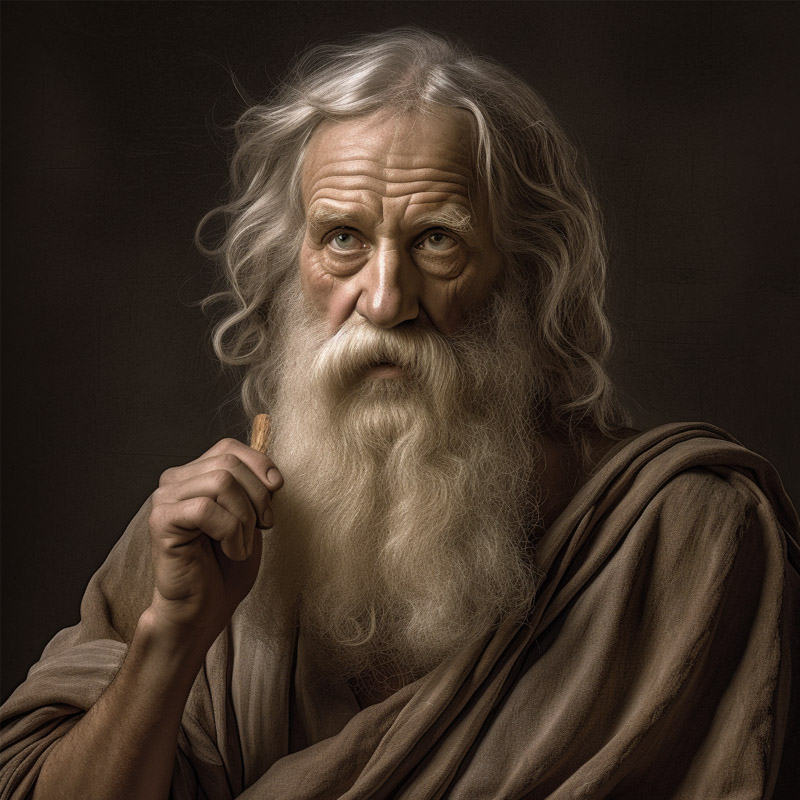
Another old philosopher portrayed by sculpture, Plato eludes a solid image of what he really looked like. Though he has many notable theories that some spend their lives studying and elaborating on, we still only have theories about the smaller details of his appearance.
Our good old AI says, yes, he was an eternally old man with an extremely sharp nose. Like most of his counterparts in the day, he also sported long hair and a beard. Again, he looks to be someone's grandpa, not a guy born 2500 years ago.
Ludwig van Beethoven
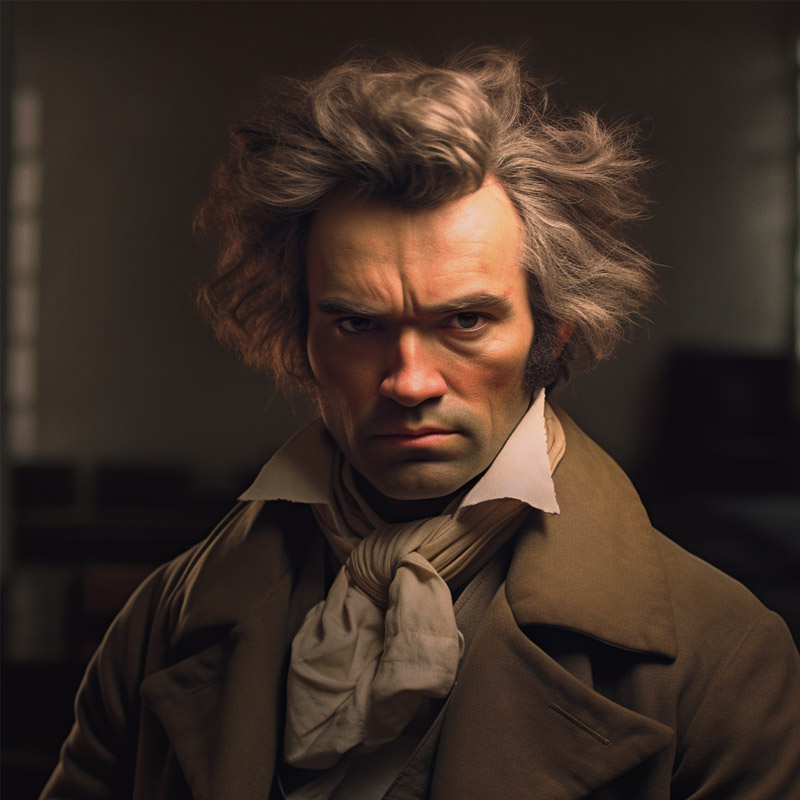
For some reason, when I try to picture Beethoven, I imagine an angry expression with furrowed eyebrows and wild hair. Maybe it's because he liked his music loud. Or maybe it's because every portrait I've seen of him includes this angry disposition.
AI gives us a bit of a softer image. He certainly still looks the same as in his portraits, but this more realistic rendition is giving off rockstar vibes. The hair, the clothes, the overall look—Beethoven would fit in just fine in today's day and age!
Leonardo da Vinci
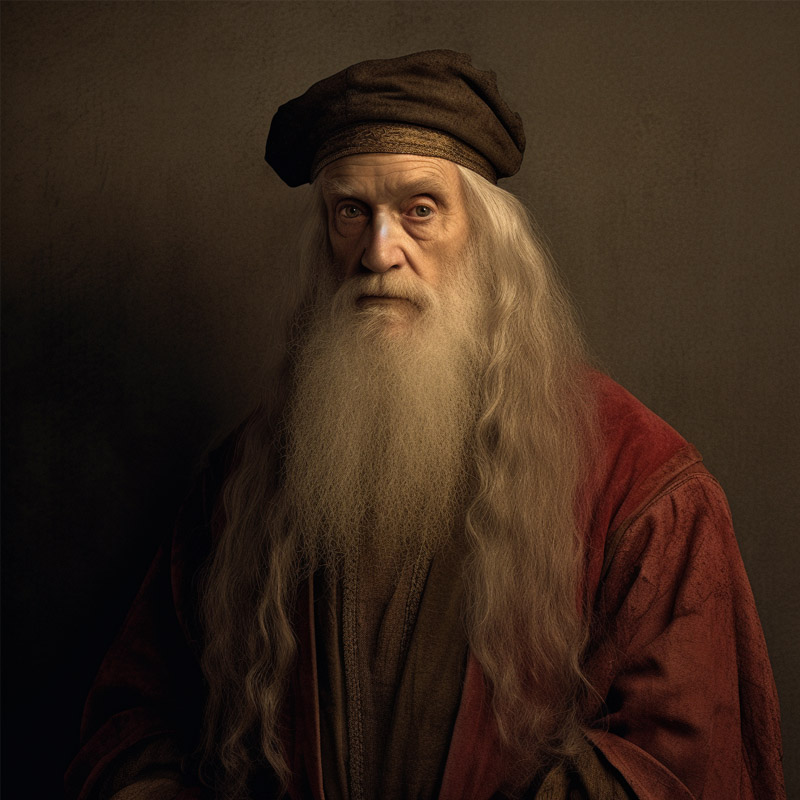
Ah, the creator of the Mona Lisa...Leonardo da Vinci has some pretty strong portraits out there, and I'm not just talking about his art. There are many paintings and sketches of the man himself and they seem pretty consistent with each other.
As usual, the AI just adds a touch of realism to any previous rendition. Here, we see him from straight on, with him looking directly at us—eerily realistic! He still has the same furrowed brow and pointed nose we see in other images of the artist.
Genghis Khan
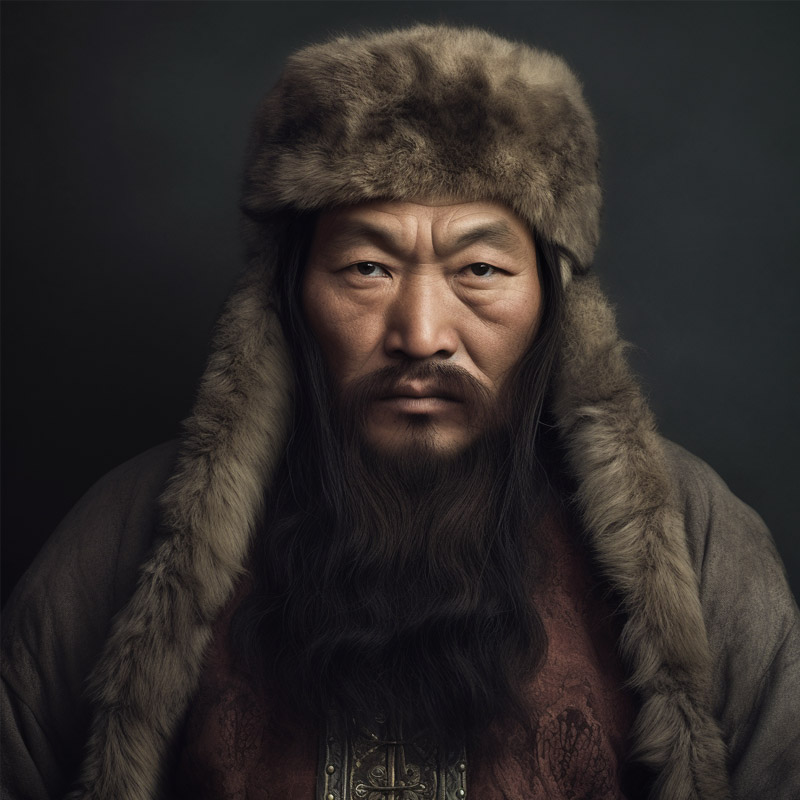
Ghengis Khan was a powerful ruler best known for unifying a large portion of Mongolian land. This empire was able to challenge the Jin dynasty in China! In fact, the Mongol Empire is recognized as being the largest contiguous land empire in history.
All of that being said, many of the man's portraits surely don't do him justice. Many depict him as looking like a peaceful, laid-back kind of guy instead of the fearsome conqueror that he was. In this image, you can see his intensity and greatness.
Johann Sebastian Bach
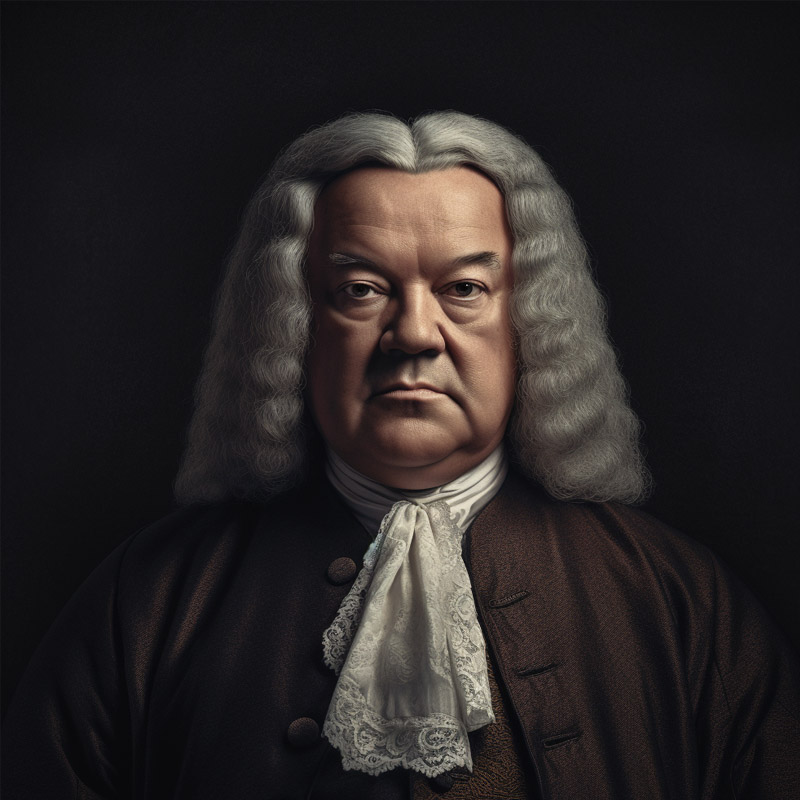
A brilliant Italian astronomer, physicist, and engineer, Galileo Galilei is an extremely prominent historical figure. When we look through his many paintings and portraits, we see some variance in his appearance—we know some characteristics may be out of place.
A brilliant Italian astronomer, physicist, and engineer, Galileo Galilei is an extremely prominent historical figure. When we look through his many paintings and portraits, we see some variance in his appearance—we know some characteristics may be out of place.
Galileo Galilei

A brilliant Italian astronomer, physicist, and engineer, Galileo Galilei is an extremely prominent historical figure. When we look through his many paintings and portraits, we see some variance in his appearance—we know some characteristics may be out of place.
However, this AI rendition certainly captures some of his key features. He definitely had a receding hairline with a wrinkled forehead. His beard is also consistent throughout all of his images.
The AI guy is just a little easier to imagine looking at the stars through a telescope than what we might find in a textbook. This created image looks ready to produce new theories and observe more of the universe!
David, King of Israel

With the white-washed Bible, many still imagine King David as a white guy with long, brown hair. However, that just isn't geographically or culturally accurate.
With AI, we can see a much more accurate depiction of what King David probably looked like. He is wearing culturally appropriate clothing and is much more on target appearance-wise for his geographic location. I give you—King David!
Constantine the Great
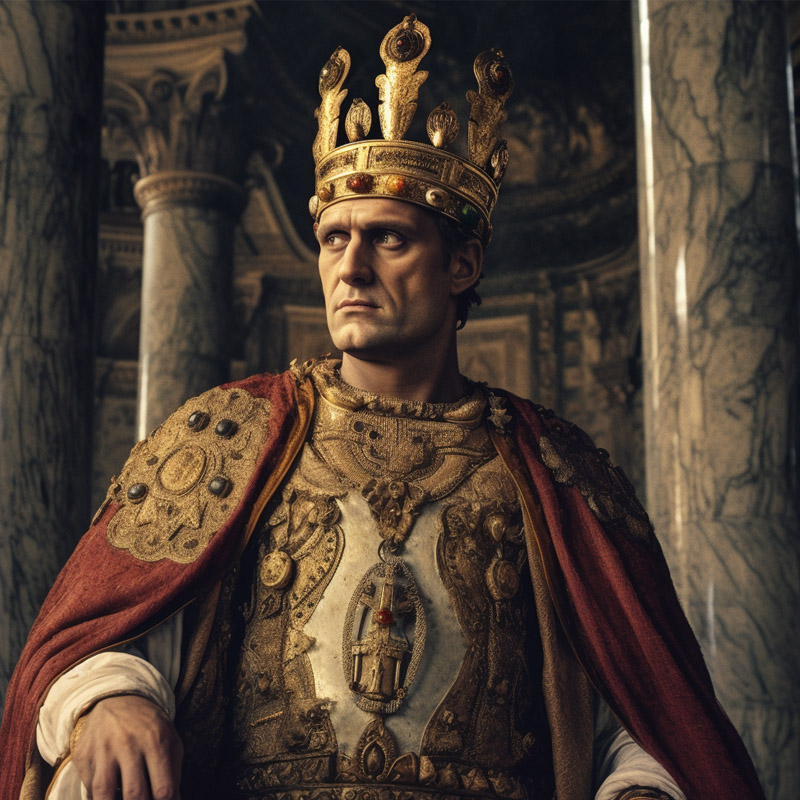
For this 306 AD Roman emperor, we have sculptures, paintings, and sketches. A few facial characteristics seem to be constant in all of his depictions. Large eyes, bags under the eyes, and a cleft chin.
In the AI portrait, we still have these characteristics, though the cleft chin has lost its dimple. And while a few key features are the same, there's a great variety between the several images you can find of Constantine. We're going to stick to this interpretation!
Socrates
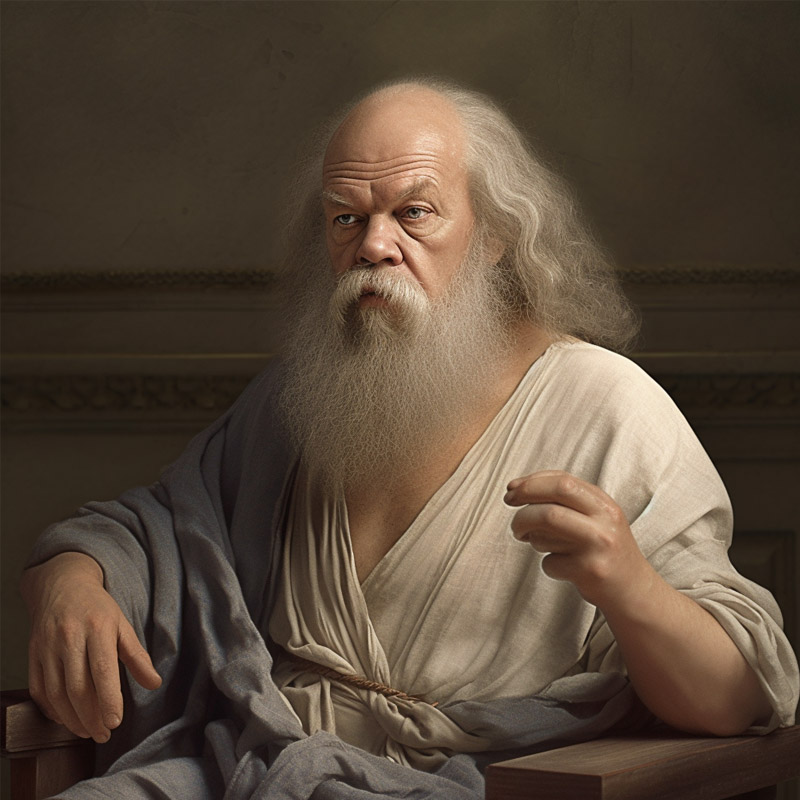
Based on the many statues, sketches, and paintings of Socrates, the man had a very distinct look about him. From his close-set eyes to his upturned nose to his wavy hair and beard, the many depictions of him through a variety of media are extremely consistent.
This is why I find the AI portrayal so interesting! He still looks similar to previous images, but here, we see his eyes are an average distance apart, his hair and beard are not wavy, and even his nose is quite different. This is definitely a new take on the ancient philosopher!
William the Conqueror

From tapestries to paintings to monuments, there is no shortage of likenesses of William the Conqueror. However, when it comes to details, there isn't much consistency.
While his nose seems similar—with a very prominent bridge—the rest of his characteristics are new. What stands out in this AI image is his eyebrow/brow structure. He still looks like a man who could achieve his title—just look at the way he stares back at you.
Vincent van Gogh
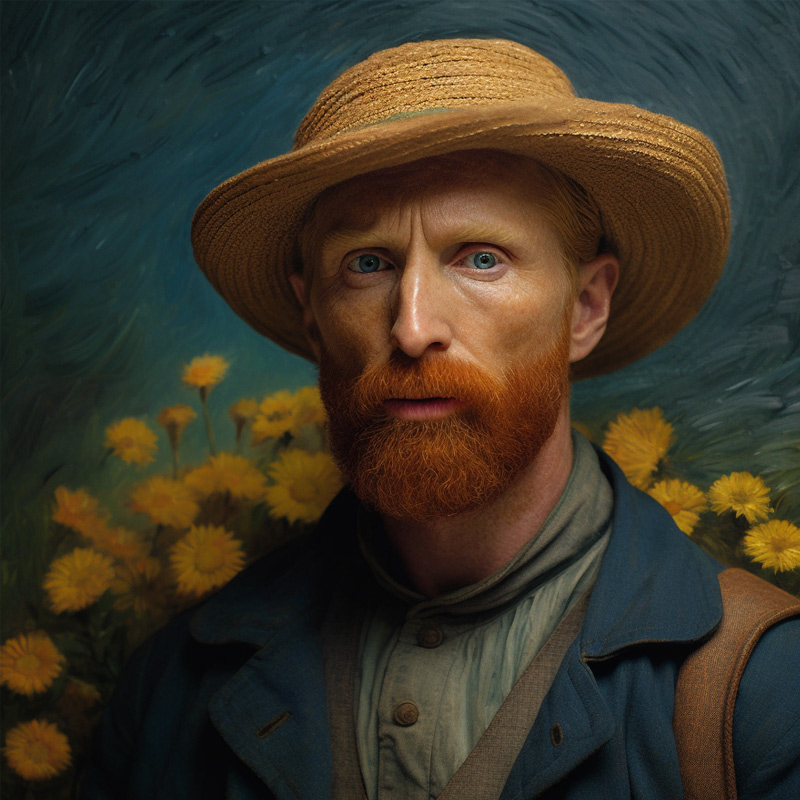
It's easy to see what a historical figure looked like when the person has multiple self-portraits—and is an artist! With Vincent van Gogh, we have multiple paintings of him and see a very strong pattern throughout each rendition. A very angular face, red hair, prominent cheek bones, and more.
AI agrees, though it doesn't take these details quite to the extreme we see in the paintings. His face here is much less angular, his cheekbones don't exactly stand out, but his nose is spot on. I think it would have been fitting to see a little bit of a swirly, starry night in the background here!
Michelangelo

Michelangelo, the renowned Italian sculptor, painter, architect, poet, etc., was a major player during the Renaissance. We see many paintings of the man and have a good idea of what he looked like.
AI made him older than the bulk of his portraits. We still see many of the same characteristics, including his ears, his eyebrows, and the lines on his face. If we were to see more paintings of when he was old, I guarantee this is what he would look like!
Ali, Founder of Sufism

As one of the central figures in Shia Islam, Ali is widely revered and honored by Muslims. Ruling in 656 until his assassination in 661, he was extremely knowledgeable in religious matters. There are not many images of him that one can find, so creating a new image is certainly worthwhile.
AI created a youthful rendition of the leader, complete with kind eyes, a bit of a smile, and striking dark hair. His eyebrows are not as arched as they appear in other paintings, giving him a bit of a softer look.
Joan of Arc

Joan of Arc has many paintings, stained glass windows, and sketches. She is usually seen with dirty blonde hair, pale skin, and looking up towards the sky. She is also usually shown in her armor, not only a saint but a defender.
Here, we see her with her eyes cast up, a covering on her head, and still clad in armor. Compared to the art we see from the 1400s, this extremely realistic rendition lends itself to imagining her on horseback, playing her part in the siege of Orléans.
Cleopatra
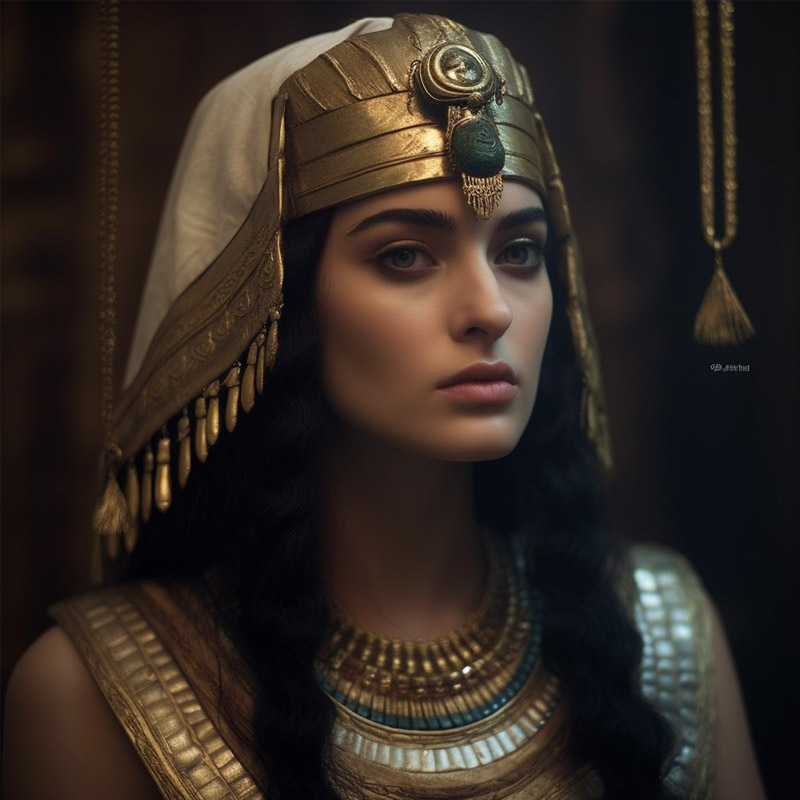
Cleopatra is a historical figure that can be seen in multiple movies, paintings, sculptures, and more. She's usually portrayed as a sultry beauty, with heavy makeup and revealing clothes. However, several modern historians have characterized her as less than exceptionally attractive. However, she was extremely charming, persuasive, and stimulating.
If we look at this AI image, the program definitely took the "seductress" description to heart, though this is still a completely new look for Cleopatra. She appears to be taller and smaller-framed than in other depictions. She also isn't wearing heavy eye makeup that is synonymous with the ancient Egyptian ruler.
Nero
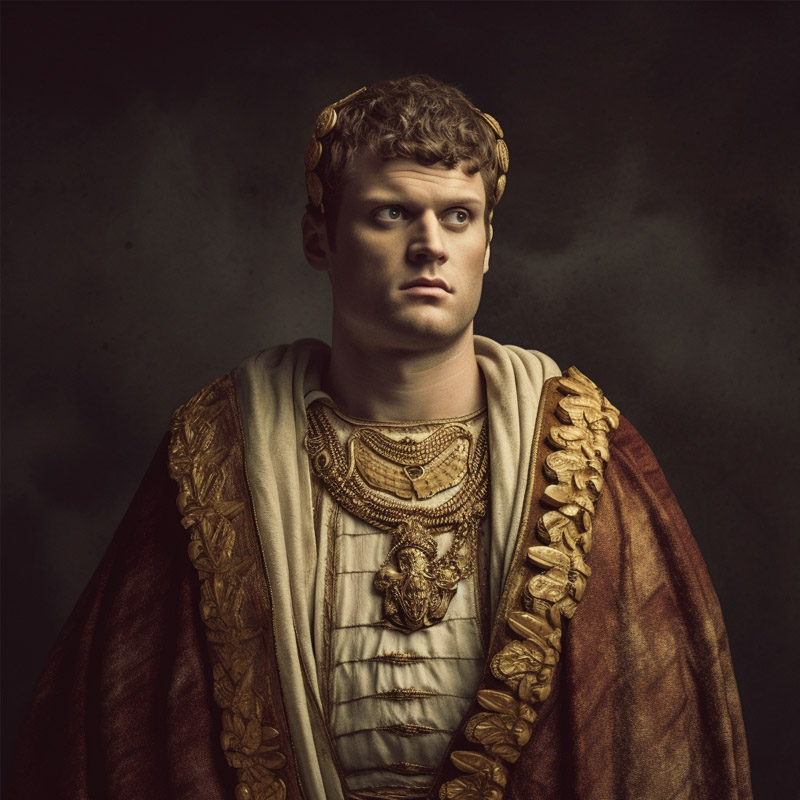
Combing through the 54 AD Roman emperor's images, the sculptures, paintings, and sketches all have some prominent features in common. These include a unique, unflattering sideburn/beard combo and downturned, pursed lips.
The AI program depicts him as an older man than we see in the majority of his portrayals. This seems to have helped his looks quite a bit, though his hair still looks a bit bizarre. AI definitely did him a solid here.
Martin Luther

Martin Luther was a German priest, theologian, author, and hymn writer in the 1500s. In each of his portraits, there is not much variance in any of his features—the artists had him down pat!
This may be the most similar-looking AI image on the list. There's not much difference between other images you see of Martin Luther versus the image here. Besides giving him a slightly slimmer face and, of course, adding finer, more realistic details, this portrayal is what you can expect when researching this figure.
Nefertiti

Nefertiti's looks are almost solely based on the famous bust believed to have been crafted in 1345 BCE. Because of this iconic bust, Nefertiti has become one of the most famous women of the ancient world and an icon of feminine beauty. It depicts slim, delicate features with a large crown.
In the AI depiction, we see the same delicate features and what we can assume to be her iconic crown. The image here is strikingly similar to the renowned bust—nothing of significant difference to note. It's amazing how we can see someone so clearly who lived so long ago!
Vlad the Impaler

With such an image-evoking title, Vlad the Impaler was a vicious ruler in the 1400s who, you guessed it, was well-known for torturing his foes in a multitude of ways, one of his favorites being impaling. This terrifying figure also inspired the tale of Count Dracula.
In many paintings, he is shown with large eyes, a pointed nose, and long, dark hair. Based on the rest of his images, this AI rendition is scarily accurate. The exaggerated pale skin is no doubt traced from his Dracula connections—vampires must be pale!
Mary Magdalene

Mary Magdalene, sometimes called Mary of Magdala, was a woman who traveled with Jesus as one of his followers. She is one of the witnesses of his crucifixion and resurrection. She's mentioned by name more than most of the apostles and more than any other woman in the gospels, besides Jesus's family.
Like much of the Bible, she's yet another Biblical figure that is shown as being fair-complected with long, red hair. The red hair is a Western portrayal meant to communicate sinful lustiness. But as you can see here, she is darker-complected—and though her hair is covered, it's safe to assume it's a dark brunette.
Abraham

Abraham is the common Hebrew patriarch of the Abrahamic religions, including Judaism, Christianity, and Islam. He's known for the depth of his faith and unquestioning obedience to God—even to the extent of sacrificing his son Isaac. Thankfully, he is not asked to sacrifice his son in the end, a ram is substituted.
Abraham is commonly depicted as an old man with a long white beard and long white hair to match. AI seems to think of him as an old man with white facial hair who likes to keep it trimmed up. Clothing-wise, AI and other portrayals are consistent—he is shown wearing robes and head coverings.
Pocahontas
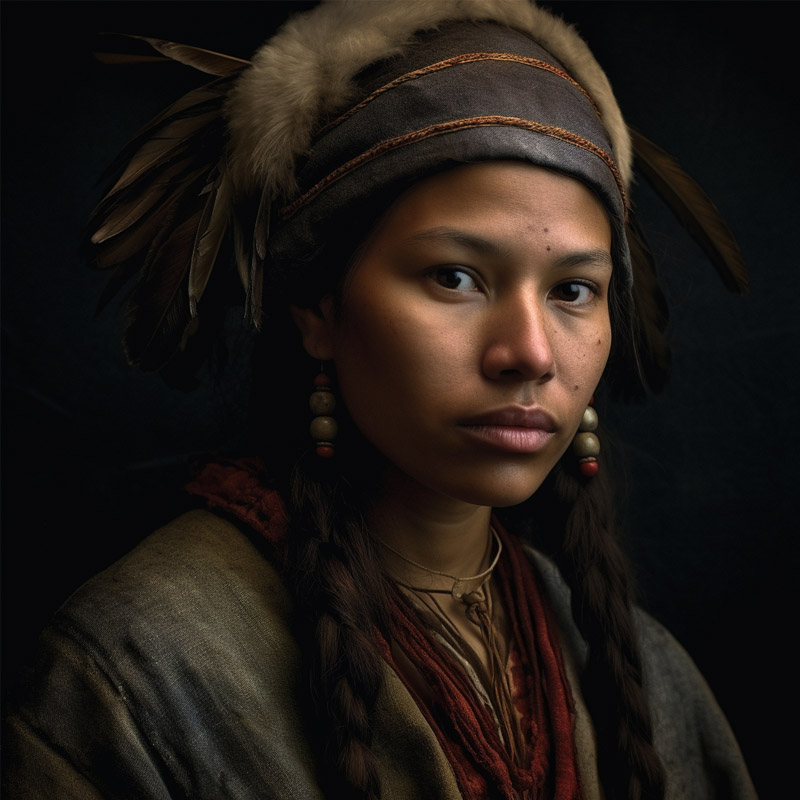
When we hear the name Pocahontas, our minds tend to go straight to the animated film from Disney—tall, beautiful, wise, dark-skinned, and long, dark hair. However, this historical figure's story has been romanticized over the years. Her original name was Matoax, which the Native Americans carefully concealed and changed to Pocahontas, out of a superstitious fear.
There is not a very consistent portrayal of Pocahontas—many of the paintings and sketches of her are very different from each other. Because of this, it's hard to say what any of her distinct features were. AI paints her as a young beauty, similar to the Disney depiction.
Marie Antoinette
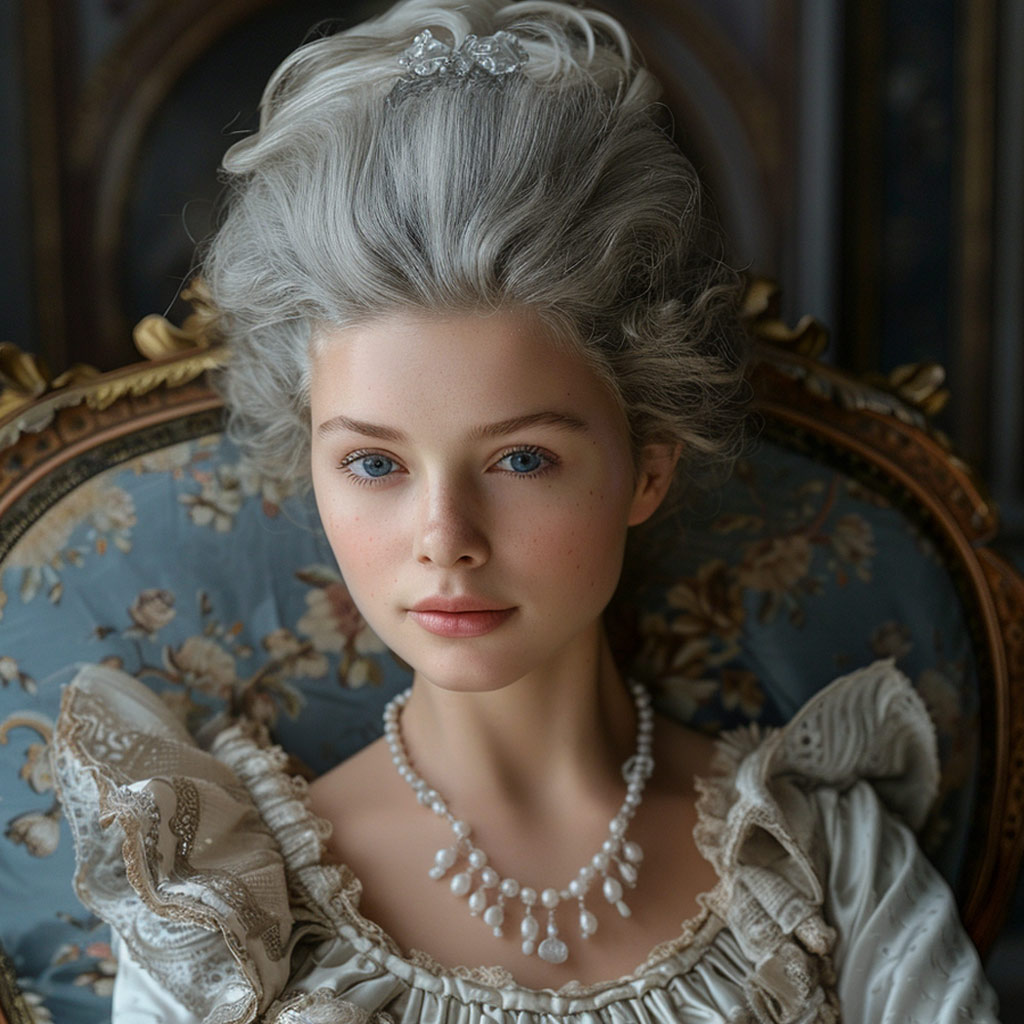
Well known for the phrase, "Let them eat cake.", Marie Antoinette was the last Queen of France before the French Revolution. She ascended the throne in 1774. After eight years of marriage, she began having children, but became increasingly unpopular among the people, being accused of being promiscuous, sympathetic to France's enemies, and having illegitimate children. Ultimately, she was executed, and the monarchy was abolished.
Also known for her lavish spending and lifestyle, most portraits of the royal portray her in fanciful gowns, large hair pieces and hats, and plenty of makeup. The necklines of her dresses are also highly revealing, more than the typical royal. In this AI image, many of those features are not shown—instead, she is given a modest dress, though clearly expensive and royal, and her hair is conservative compared to other portrayals.
Moses
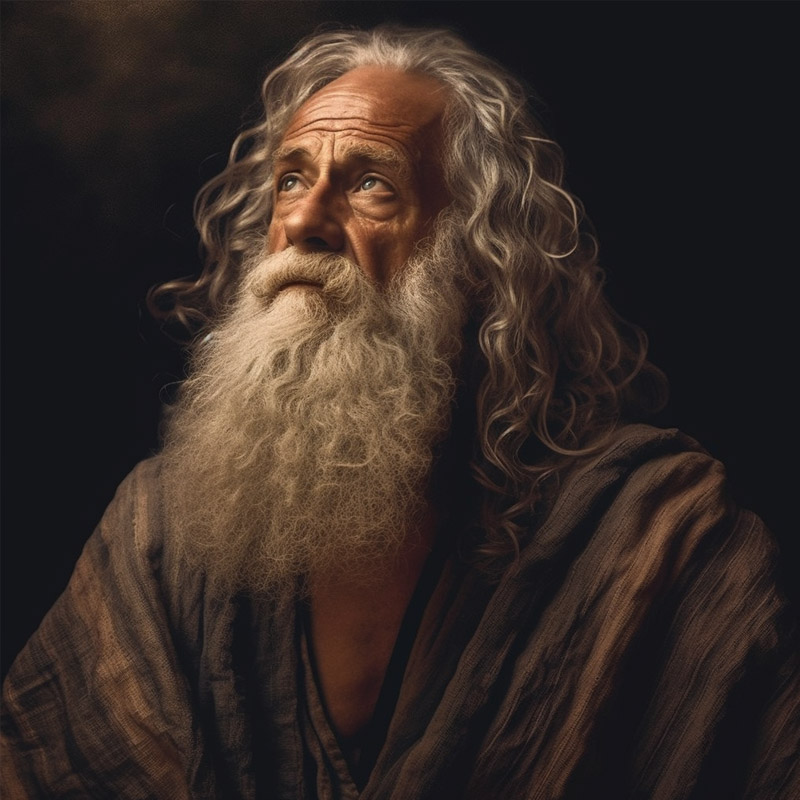
Versions of Moses have been depicted for quite some time. From portraits to movies to animations to books, Moses is a popular figure! Considered the most important prophet in Judaism and one of the most important prophets in Christianity, Islam, and other faiths, he's known for the plagues in Egypt, parting the Red Sea, and receiving the Ten Commandments straight from God.
Usually seen as an old man with a long, gray beard and a kind of wild head of hair with an expression to match, the AI image shows us a slightly different take. Here, we see him not only with a long white beard and long white hair, he's also quite bald on top. That's a bold take on the prophet!
King Solomon

King Solomon is another Biblical figure who—surprise!—is depicted as an old white guy with a long, gray-white beard, a crown always on his head, and wearing regal clothing with a scepter. He was a monarch of ancient Israel and the son of King David. It's said that in a dream, God offered him anything he wished for as long as he chose to continue to live righteously, and Solomon wished for great wisdom to govern his nation.
In this AI rendition, King Solomon seems to be much more accurate for his geographical location. He is dark-skinned, has dark facial hair, and has an intense look on his face—fitting for a king. AI kept his regal clothes and crown. Which King Solomon do you think is more accurate?
Sacagawea

Sacagawea was a Lemhi Shoshone woman who helped the Lewis and Clark expedition in exploring the Louisiana Territory. She traveled thousands of miles with the expedition, helping to establish cultural contacts with Native American people and contributing to the expedition's knowledge of natural history in different regions.
Commonly depicted with long, dark hair split into two braids and walking staff in hand, Sacagawea's overall image is pretty consistent throughout her many portrayals. In this AI image, she is also shown with the double braids, traditional clothing, and strong facial features similar to other depictions.
George Washington
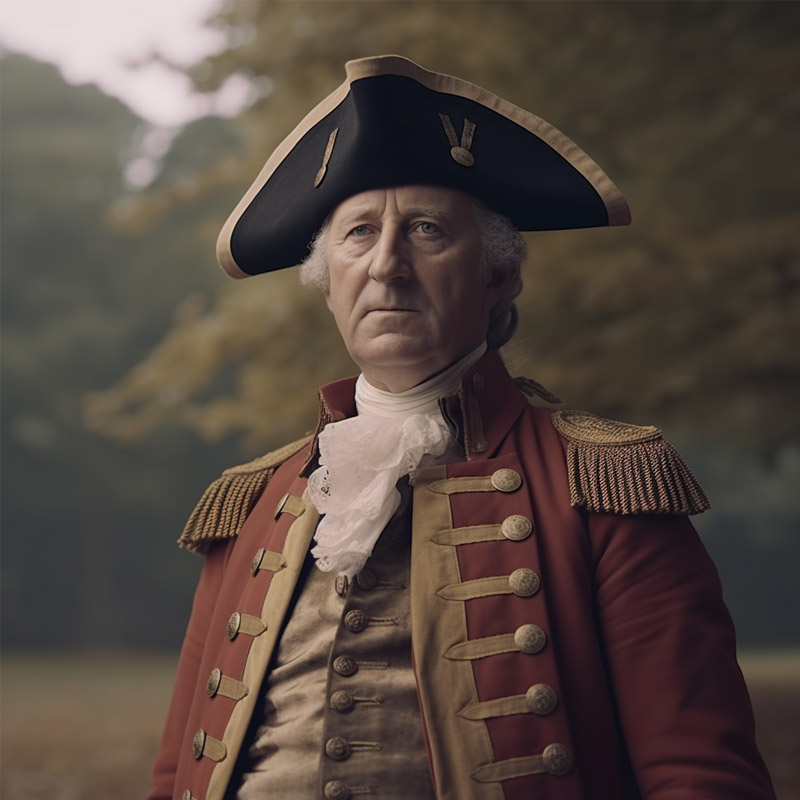
With recent musicals and whatnot, George Washington is back in the picture in full force. Some people are just wondering what he would think of the world as it is today. Honestly, we’ve wondered that ourselves. Would one of our Founding Fathers be happy about America? What did he picture when he thought about the future?
Looking at his modern picture, we know he’d certainly stay in his line of work. Then again, there’s plenty of ways to influence a nation. You don’t necessarily have to do it in the House or Senate! But this isn't exactly the face that we picture from looking at the dollar bills or quarters in our pockets!
King Tut
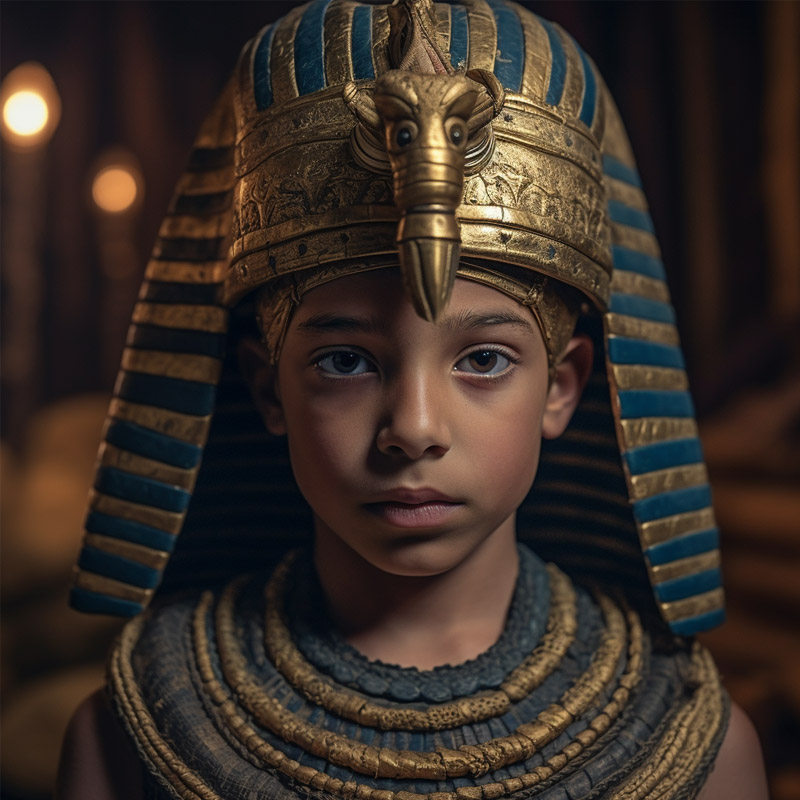
King Tut is most famous for his opulent tomb, which was disturbed and cursed those who found it (supposedly). After it was discovered, we all got a good look at the mask of King Tut, which showed the young prince for the first time. It was the only real image we’ve been able to pull from for ages.
What King Tutankhamun actually looks like has been a major mystery in Egyptology. It was only recently that we really understood his true age. Also, several people theorize that the boy king actually had several physical deformities related to inbreeding in the Egyptian royal bloodline, hence his death at an early age.
Mary Queen of Scots

Mary's true face was reconstructed, and she certainly looks different. The years of her tumultuous life (mostly imprisonment) obviously took a major toll on her, as her reconstruction shows an older face. That being said, she's still quite beautiful. It turns out the paintings weren’t too far off, although they did still have the typical de-aging thing going on.
The general features of her face are the same, but just like today you can’t always trust what you see in pictures. People will always depict themselves positively, and when you’re a queen like Mary Queen of Scots, you would definitely have your painting commissioned with a friendly hand. Who wouldn’t want to put their best foot forward when being remembered in history.
Queen Elizabeth II
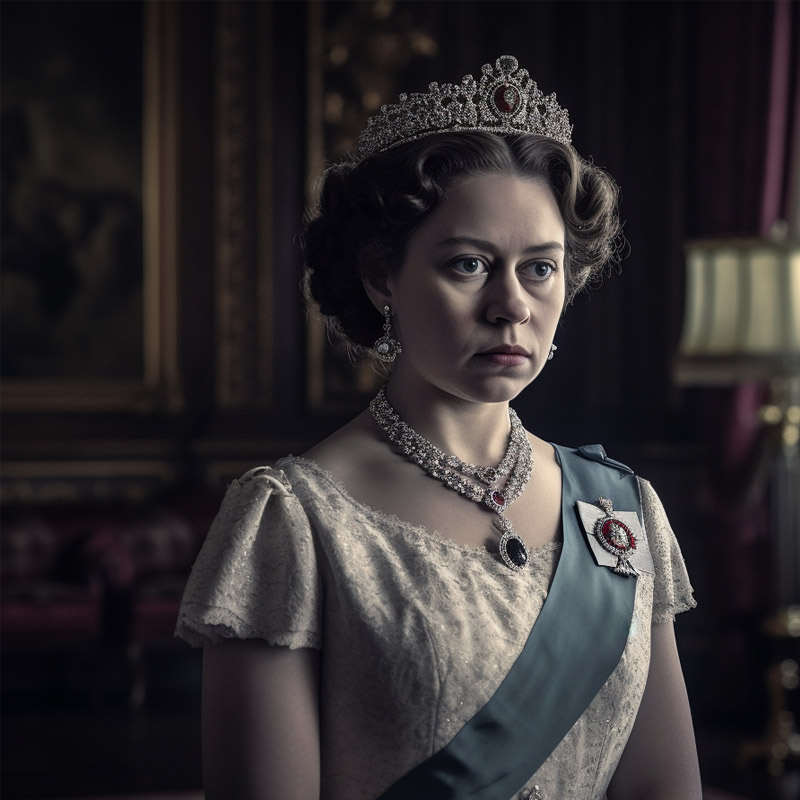
Queen Elizabeth II is probably our most recent historical figure on this list. Ruling from 1952-2022, her reign of over 70 years was the longest of any British monarch and the longest reign of any female monarch in history! In her younger years, the Queen had dark, curly hair, pale skin, and thick eyebrows. In her older age, her hair turned snow white.
AI chose to recreate her youth, complete with her dark, curly hair. Though we know this wasn't exactly what she looked like, AI did a pretty good job of portraying her without simply recycling pictures of her. Her eyes here are set a bit farther apart, her eyebrows are not quite as arched, and her lips are shaped slightly different, but her nose, skin tone, hair, and face shape are all pretty spot on!
Dante Alighieri
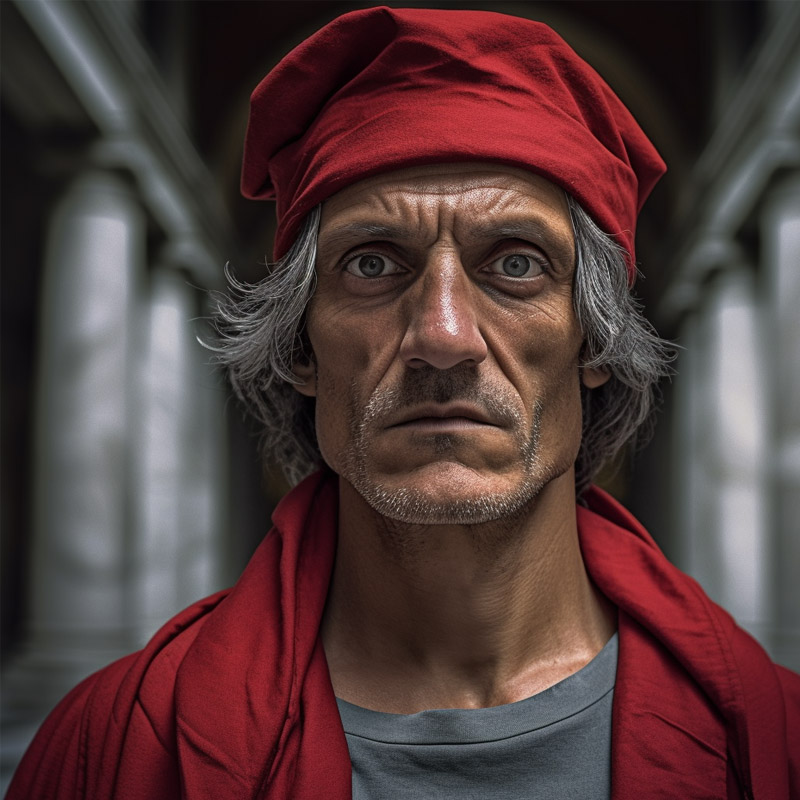
Often referred to as simply Dante, this historical figure was born in 1265. An Italian poet, writer, and philosopher, some of his most well-known works are his Divine Comedy and his depictions of Hell. The man is usually depicted as having a long, pointed nose that curved downward and a very short line of a mouth. In nearly every portrait, he is wearing a head piece made of a reddish cloth wrapped with leaves.
In this AI portrait, we lost the consistency of the interesting head garment. However, the rest of his physical features look very much the same as in other portraits. He has the same nose, gaunt cheeks, and square chin. Most of his portrayals show his eyes to be relaxed in almost a sleepy state. Here, he looks wide awake.
Saint Nicholas

Saint Nicholas was an early Christian bishop who lived 270-343 AD. Also known as Nicholas the Wonderworker, his habit of secret gift-giving gave rise to none other than Santa Claus. His portraits show him as an older man, with white hair and a white beard. He is also usually dressed in his clerical robes.
Though this AI image looks similar to a select few portraits of the saint, this is not the most popular depiction of him. With large bags under his eyes, a short beard, and a small frame, he doesn't look like a figure who would inspire the creation of Santa Claus.
Nicolaus Copernicus
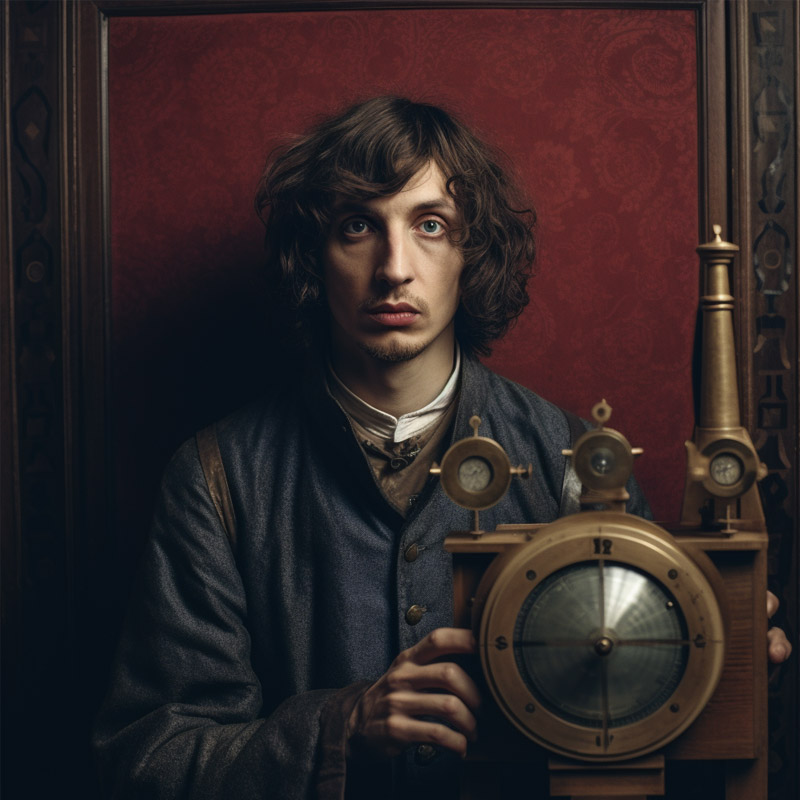
Nicolaus Copernicus, born in 1473, was a mathematician and astronomer who developed a model of the universe which placed the sun at the center rather than the Earth—a revolutionary idea! When looking through his portraits, he is usually shown with dark hair—straight at the roots, and then forming a curly shape around his ears. He has a diamond-shaped face with dark eyes, a large nose, and a small mouth.
In this AI rendition, he looks extremely similar to all his other depictions. His haircut looks the same, his nose is the same, and he has the same dark eyes. A few minor differences include the shape of his face and his mouth. Here, his mouth is a straight line with small, straight lips—all other depictions show him with a small mouth and pursed lips.
Richard III
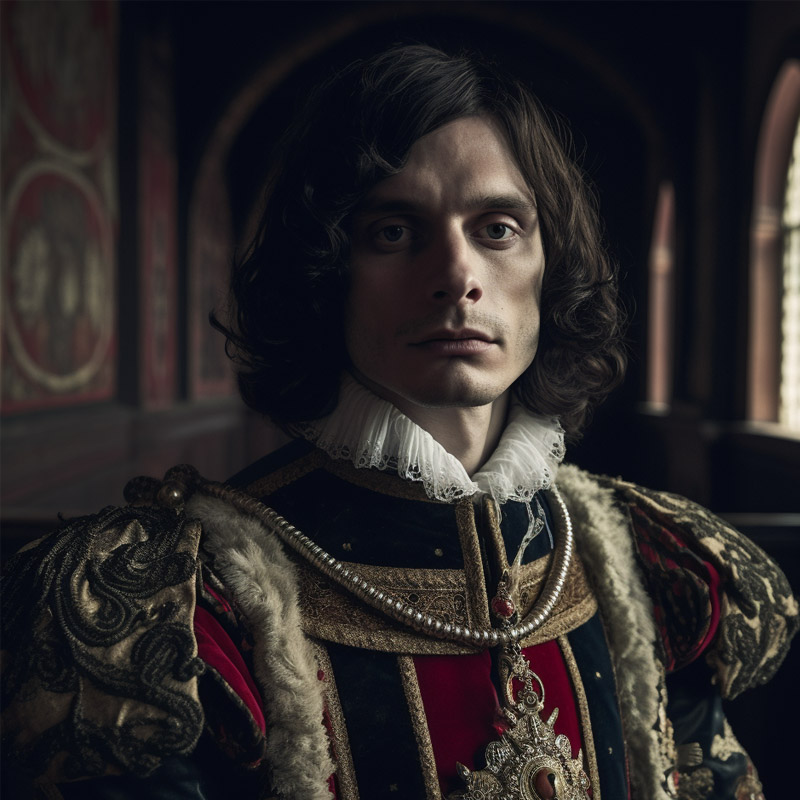
Richard III ruled England from 1483-1485, just two short years. There were two major rebellions against him, the first being unsuccessful and the second one ending in his defeat and his being slain in battle—the last English king to die in battle. With chin-length dark hair, pale skin, and small eyes, some portrayals of this king are reminiscent of Lord Farqaad.
AI's depiction of Richard III certainly makes him look more intimidating. Missing his usual hat with an insignia, he definitely has a different look about him. However, many key physical characteristics are the same, from his hair to his eyes, to his skin tone. He just needs his hat!
Thomas Jefferson

Thomas Jefferson’s comin’ hooooome! Okay, enough Hamilton. Although, Jefferson would probably still ask, “So what did I miss?” If he were alive today, so much happens day-to-day that it’s almost hard to follow! Unlike some of the other Founding Fathers, Jefferson doesn’t look like he’d stay in the same line of work.
He’d probably be in the C-Suite of some major company. Honestly, he looks like he could lead Tesla into a brand new age. Considering he was one of the earlier presidents of the United States, Jefferson is probably happy about how history ended up. He likely wouldn’t make it today.
Ben Franklin
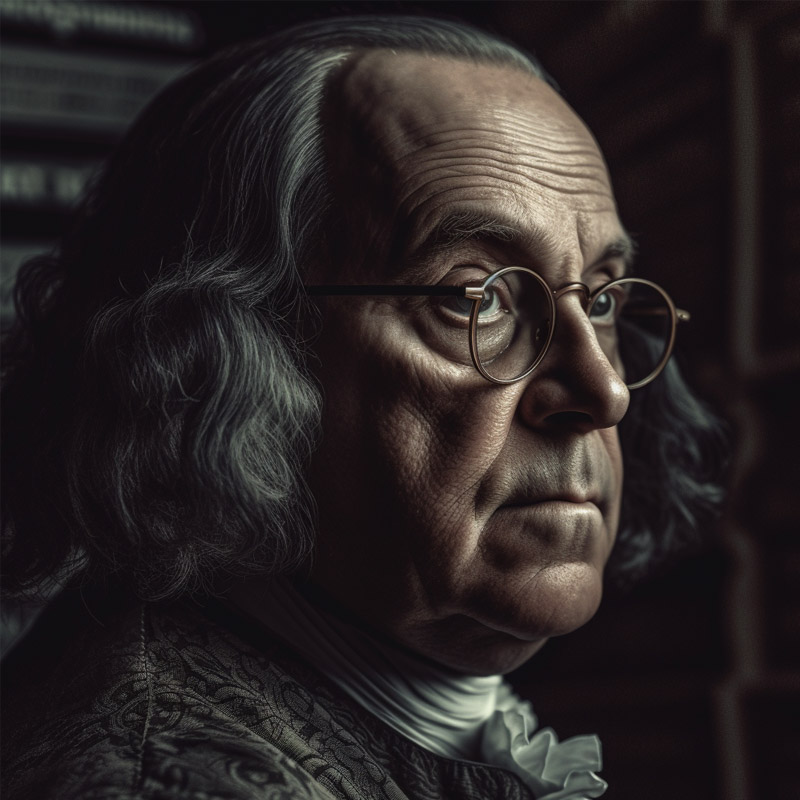
What didn't Benjamin Franklin do during his lifetime? Calling him an overachiever just doesn't do justice. He was a great politician, the Postmaster of Philadelphia, an Ambassador to France, and a founding father of the United States of America! When he wasn't madly busy, he was working on tons of different inventions.
Franklin invented the Franklin Stove, which used less fuel than the ones used during his time. He also invented musical instruments, bifocals, and even worked on the first American political cartoons. Who knew we had comic strips back then? Basically, Benjamin Franklin couldn't be stopped even if you tried. The man was a machine.
Statue of Liberty
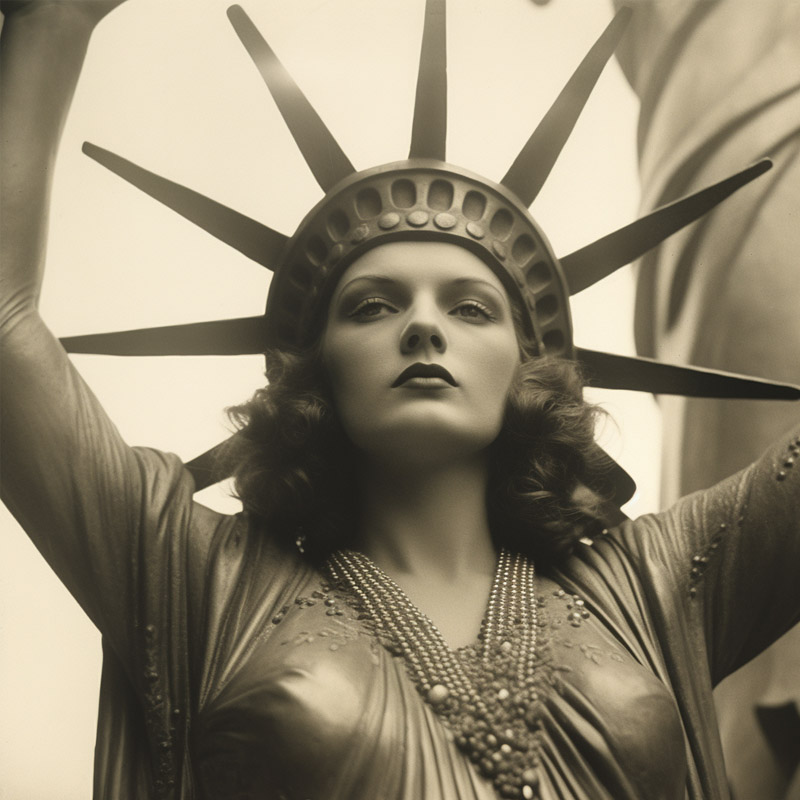
Okay, we know the Statue of Liberty isn't a real person, but was it modeled after a real person? Also no. The statue is a figure of Libertas, a robed Roman liberty goddess. The copper gift from France was dedicated in 1886 on Liberty Island. Libertas is often depicted with a torch in one hand and a small headband/crown embedded in curly, dark hair.
Given this information, AI seems to have melded the two—the statue and the goddess—into one image! Here, we see young facial features and dark, curly hair. Instead of her small headpiece, the goddess is given the crown that we see on the Statue of Liberty. What a neat crossover—Lady Liberty!
Henry VII

Henry VII was the King of England from 1485-1509. He actually seized the crown and was the first monarch of the House of Tudor. He took the throne when his forces, supported by France, Scotland, and Wales, defeated Richard III. He restored power and stability and is credited with many initiatives. Funnily enough, he actually looked very similar to Richard III according to his portraits.
Though their portraits may look the same, the two men look extremely different according to AI. Henry has a long, thin face with scraggly hair. He's also wearing a headpiece—AI was aware he needed the traditional hat! His eyebrows, nose, and mouth are almost identical to most of his portrayals.
Frederic Chopin

Frederic Chopin was a Polish composer and pianist of the Romantic period who lived from 1810-1849. He was a leading musician for his era and was one of music's earliest celebrities. His works remain popular today. Most images of him show a deep side part with dark hair cut just below his ears. He had a pointed chin and was clean-shaven. His most popular images show him as a young-to-middle-aged man.
Depicted at a much older age here, AI has captured some similarities, but mainly differences. It's mainly the eyes—the eyes look significantly different from any other rendition we see of him. The rest of the differences can be chocked up to his older age. Gone are his dashing looks, and in their place stand an old man who only knows the piano.
William Taft
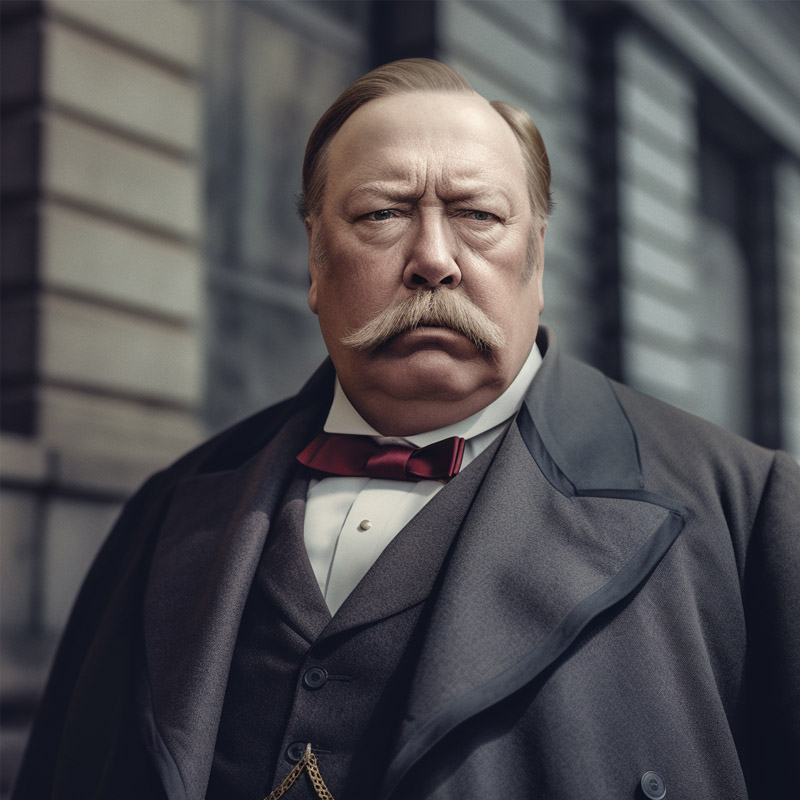
William Taft, known as being the 27th president of the United States, is generally ranked in the middle when it comes to U.S. presidents. He is generally shown sporting a handlebar mustache and wearing business attire. He parted his hair down the middle, had a cleft chin, and was a bit overweight.
In this AI image of him, he pretty much looks like the exact same guy—if we could make one major change, it would be to curl up the ends of his mustache! The rest of his facial features look consistent with other images of the historical figure. However, he does look heavier here than in other portrayals.
Mary Shelley
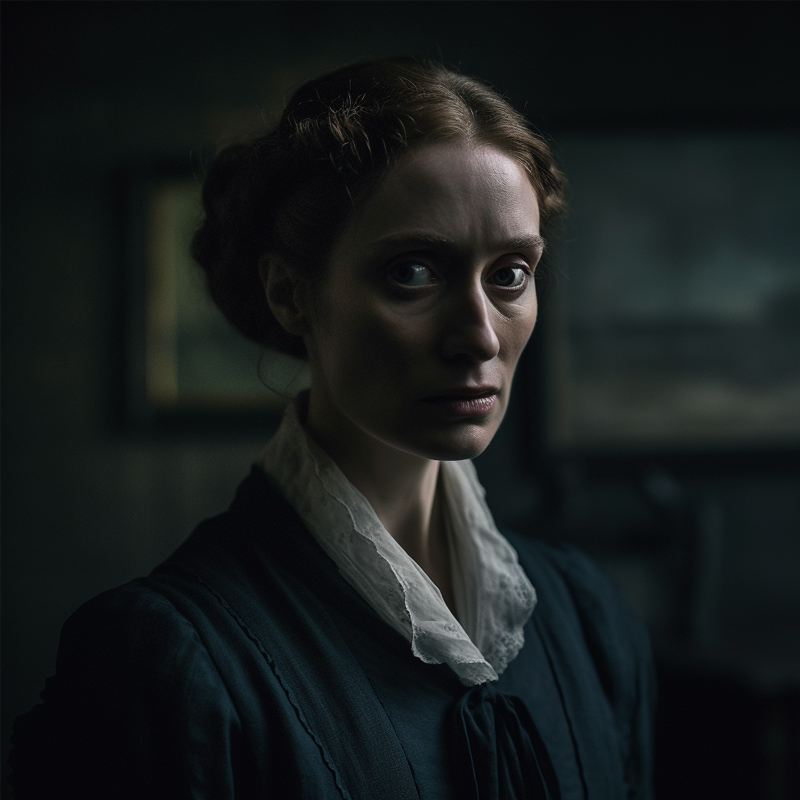
Mary Shelley, born in 1797, was a pioneer of Gothic literature and a trailblazer in the realm of science fiction. Her most famous work, Frankenstein; or, The Modern Prometheus, published when she was just 20 years old, remains a seminal piece in English literature. This iconic novel explores themes of ambition, hubris, and the moral responsibilities of scientific discovery.
Her piercing gaze hinted at her intellect and imagination. Despite enduring personal tragedies, including the deaths of several children and her husband, the poet Percy Bysshe Shelley, Mary Shelley continued to write prolifically.
Phillis Wheatley

hillis Wheatley, born around 1753, was the first African American woman to publish a book of poetry. Enslaved as a child in colonial America, she was purchased by the Wheatley family in Boston, where she received an education unusual for someone in her circumstances. By the age of 12, she was already demonstrating remarkable talent in poetry, drawing inspiration from classical literature and biblical themes.
Despite facing numerous hardships, including the loss of her family and enduring enslavement, Wheatley's resilience and literary prowess established her as a significant figure in American literature and the abolitionist movement.
Jane Austen
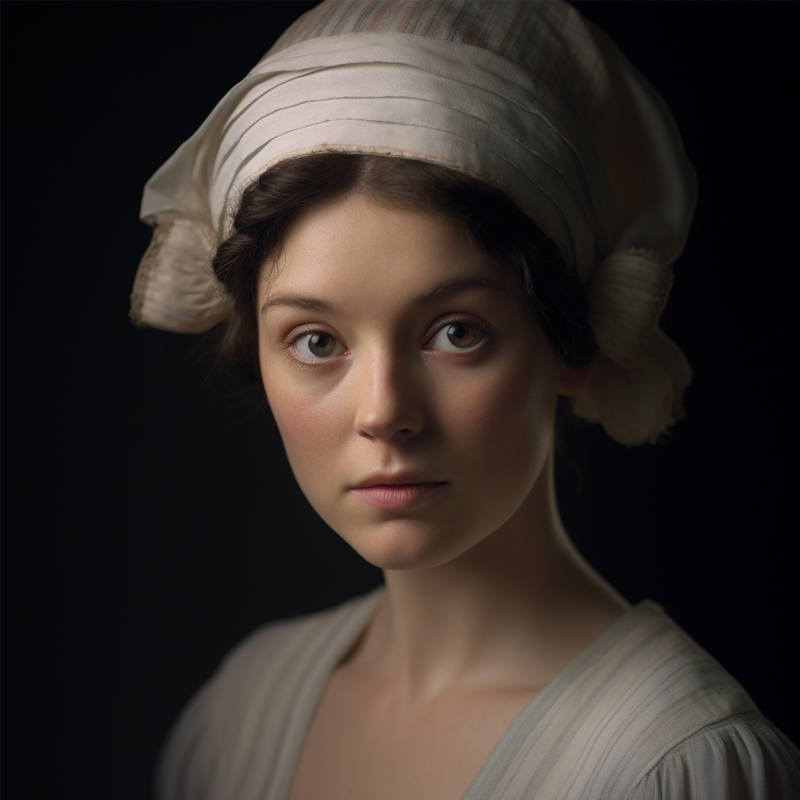
Jane Austen, born in 1775, is celebrated as one of the most beloved novelists in English literature. Her works, including Pride and Prejudice, Sense and Sensibility, and Emma, continue to captivate readers with their incisive wit, keen social commentary, and timeless exploration of human relationships.
Physically, Jane Austen was described as having a modest and unassuming appearance. She had a petite stature, with a slender frame and delicate features. Her expressive eyes were often noted for their intelligence and perceptiveness, reflecting her keen observation of the world around her. Despite her unassuming appearance, Austen possessed a sharp intellect and a lively sense of humor, which she wielded masterfully in her writing.
Adam and Eve
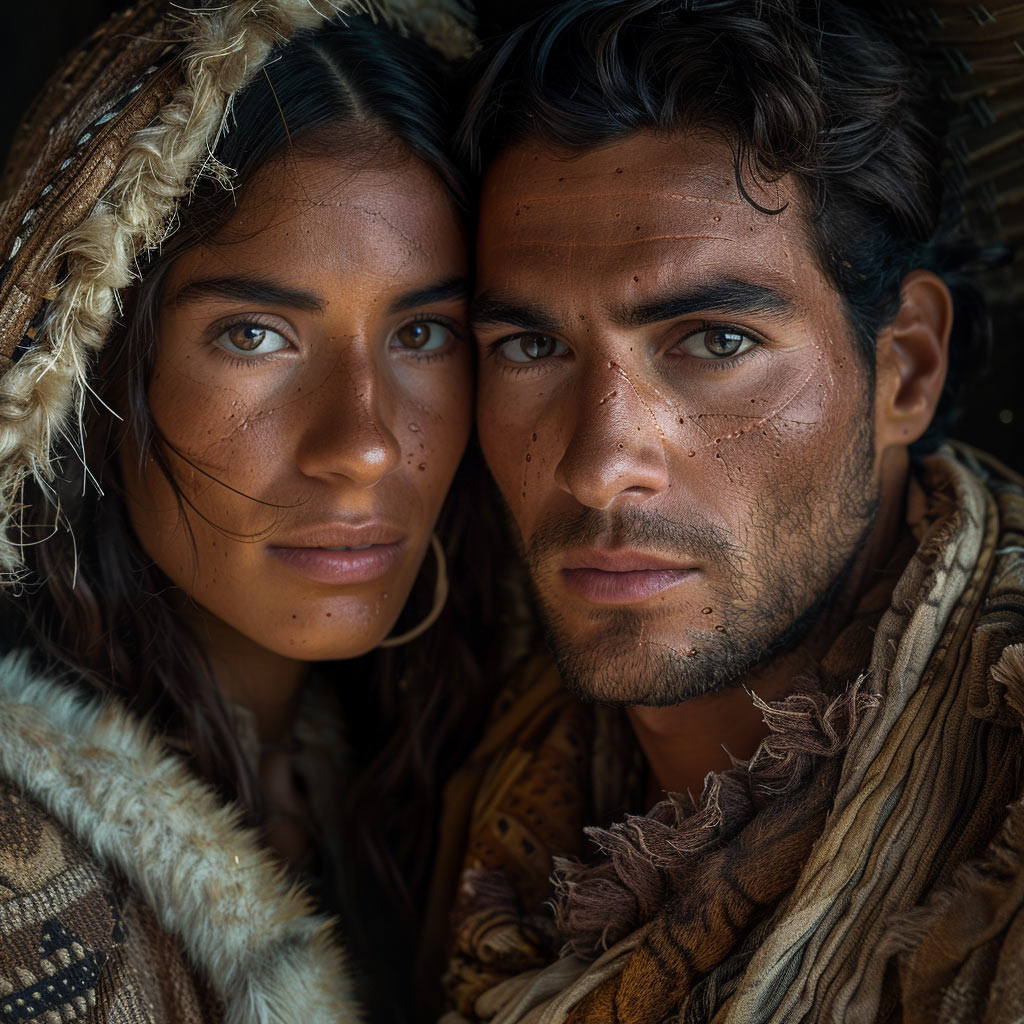
Adam and Eve were the first people to walk this earth, according to the Bible. So what did the first man and woman look like? Most portraits depict them as light-skinned, with an average build. Eve has long, flowing hair, while Adam has what we may consider an average-looking male hairstyle. Oh, and they're naked, of course
AI thinks of these two figures as having darker skin than other portrayals, dark hair, and an average to slender build. Eve is not entirely sans-clothes, sporting a necklace—did she make it, or did Adam make it for her? Based on this analysis, I'd say we had some attractive ancestors!
 Author
Courtney Holt
Last Updated: October 18, 2025
Author
Courtney Holt
Last Updated: October 18, 2025